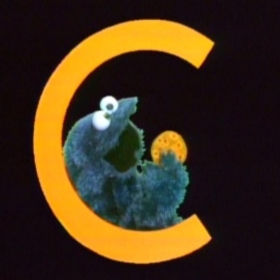Svo and þá

Svo and þá can be tricky words: they can both translate as then, but they aren’t interchangeable. Svo is extra tricky, sometimes changing the word order in its sentence and sometimes not.
Well, let’s make these tricky words easi(er) to understand!
In a nutshell:
- Svo = then, subsequently (adverb, triggers Verb Second word order)
- Þá = then, at that moment, that’s when
- Svo = so, therefore (conjunction, doesn’t trigger Verb Second word order)
Svo vs. þá
Svo and þá both mean then, but they’re used differently. Svo means then in the sense of subsequently or afterwards, and þá means then in the sense of at that moment or that’s when.
- Svo = then, subsequently
- Þá = then, at that moment, that’s when
Let’s take a look at a few examples.
- Ég borðaði morgunmat klukkan átta, svo fór ég í vinnuna = I woke up at eight, then (subsequently) I went to work.
- Ég beið til klukkan átta, en þá vaknaði hann = I waited until eight, but then (at that moment) he woke up.
In the first example I finished having breakfast, and the next thing I did (subsequently) was go to work. In the second example, I didn’t finish waiting and something happened AFTER that: I was waiting and while I was waiting he woke up. “At eight” is the moment when he came.
- Ég bakaði smákökur, og svo borðaði ég þær = I baked cookies, and then I ate them.
- Ég var að baka smákökur en þá kom kökuskrímslið = I was baking some cookies, but then the cookie monster came.
In the first example, I baked some cookies, and the next thing I did (subsequently) was eat them. In the second example, I was in the process of baking some cookies, and that’s when the cookie monster showed up.
Let’s get a few more examples, just to drive home the point.
- Hún skrifaði ritgerð og fór svo heim = She wrote an essay and then (subsequently) went home.
- Hún var að skrifa ritgerð, og þá kom hann inn = She was writing an essay, and then (that’s when) he came in.
- Fyrst keypti ég inn, svo talaði ég við Önnu = First I bought groceries, then (subsequently) I talked with Anna.
- Ég var nýbúinn að kaupa inn og ætlaði að elda, en þá kom Anna = I had just bought some groceries and was about to cook, but then (that’s when) Anna came.
Svo fór ég vs. svo ég fór
(This won’t make a lick of sense if you don’t already have a good understanding of the V2 rule. Go read about that first if you don’t know it, then come back to this.)
Sometimes svo changes the word order in the sentence, and sometimes it doesn’t. What gives? Well, svo has a couple of very different meanings.
- Svo = so, therefore
- Svo = then, subsequently
Take a look at these two examples.
- Þú komst með kærustu þína svo ég fór heim = You came with your girlfriend so I went home.
- Þú komst með kærustu þína, svo fór ég heim = You came with your girlfriend, then I went home.
Svo = so, therefore is a conjunction, and occupies the 0th position. The word order is unchanged from a standard sentence (svo0 ég1 fór2 heim).
Svo = then is an adverb, and it occupies the first position in the sentence. The word order has to change to maintain the verb in the second position (svo1 fór2 ég heim).
If the idea of “position” doesn’t make sense to you, read our article on Verb Second and then come back to this!
Let’s take a look at a few more examples, just for kicks.
- Fyrst borðaði ég morgunmat, svo vann ég svolítið = Fyrst I ate breakfast, then I worked a bit.
- Ég borðaði ekki morgunmat, svo ég vann bara svolítið = I didn’t eat breakfast, so I only worked a bit.
- Þú sagðir mér söguna um ananasinn, svo talaði ég við hitt fólkið í veislunni = You told me the story about the pineapple, then I talked to the other people at the party.
- Þú talaðir ekki við mig svo ég talaði við hitt fólkið í veislunni = You didn’t talk to me so I talked to the other people at the party.
Related reading
If you found this interesting, you might also be interested in these articles.



